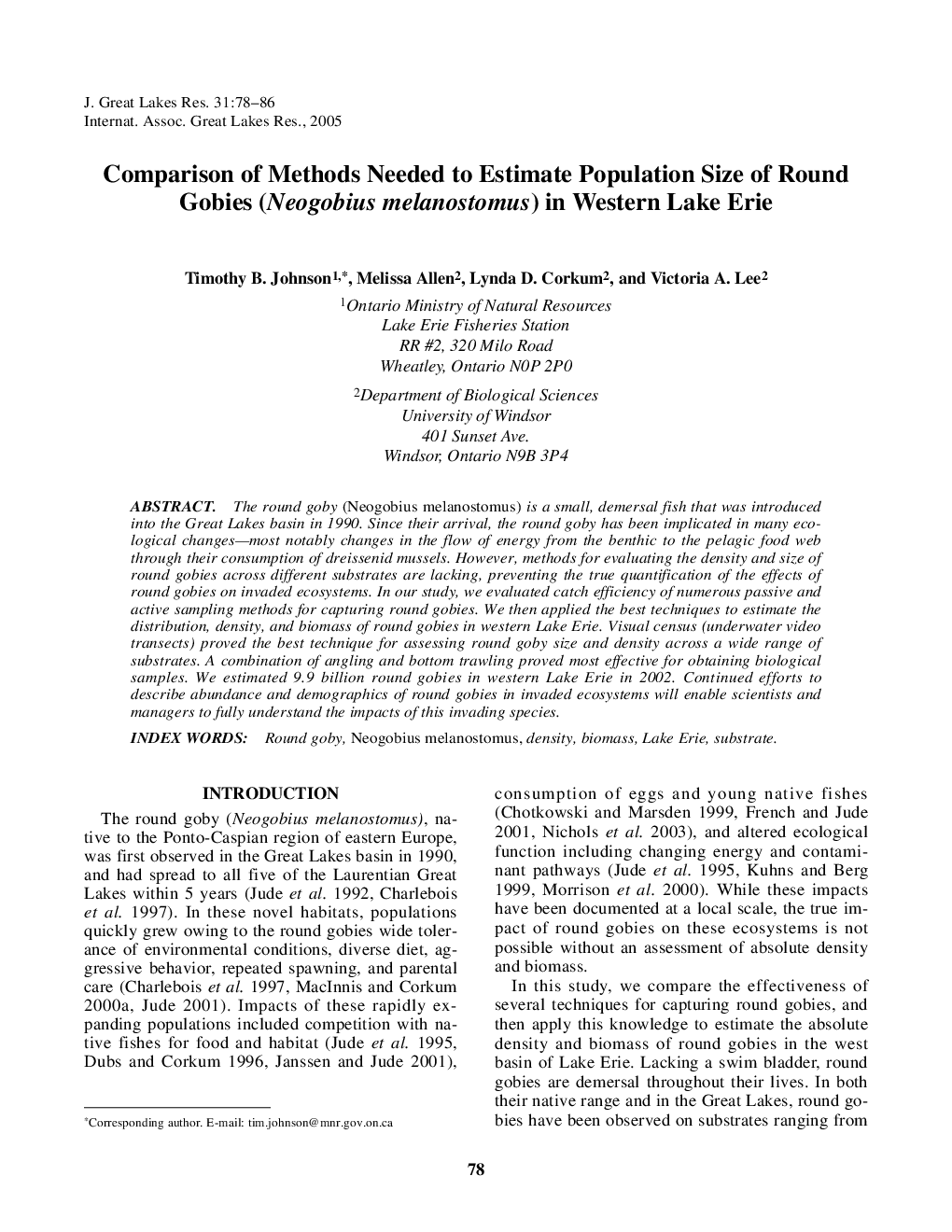| Article ID | Journal | Published Year | Pages | File Type |
|---|---|---|---|---|
| 9450209 | Journal of Great Lakes Research | 2005 | 9 Pages |
Abstract
The round goby (Neogobius melanostomus) is a small, demersal fish that was introduced into the Great Lakes basin in 1990. Since their arrival, the round goby has been implicated in many ecological changes-most notably changes in the flow of energy from the benthic to the pelagic food web through their consumption of dreissenid mussels. However, methods for evaluating the density and size of round gobies across different substrates are lacking, preventing the true quantification of the effects of round gobies on invaded ecosystems. In our study, we evaluated catch efficiency of numerous passive and active sampling methods for capturing round gobies. We then applied the best techniques to estimate the distribution, density, and biomass of round gobies in western Lake Erie. Visual census (underwater video transects) proved the best technique for assessing round goby size and density across a wide range of substrates. A combination of angling and bottom trawling proved most effective for obtaining biological samples. We estimated 9.9 billion round gobies in western Lake Erie in 2002. Continued efforts to describe abundance and demographics of round gobies in invaded ecosystems will enable scientists and managers to fully understand the impacts of this invading species.
Related Topics
Physical Sciences and Engineering
Earth and Planetary Sciences
Earth and Planetary Sciences (General)
Authors
Timothy B. Johnson, Melissa Allen, Lynda D. Corkum, Victoria A. Lee,
